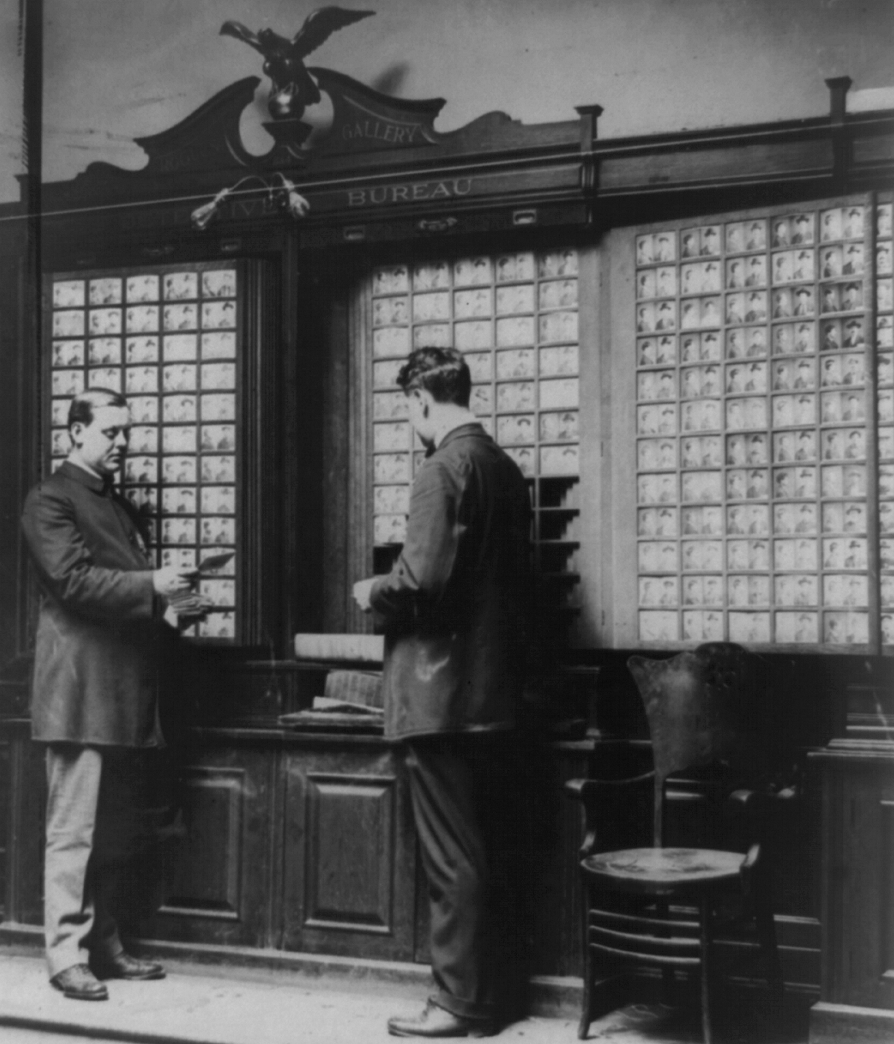The Rogues’ Gallery was a collection of photos of known criminals intended to make it easier for law-enforcement officers to track and arrest miscreants. It was a precursor to mug shots and photographs of the FBI’s most-wanted criminals hanging on post office walls. The idea for such a gallery was first hatched in 1857 by Allan Pinkerton for his detective agency, and it was adopted later in the 19th century by the New York City police department. But where exactly were the NYPD photos shot in the time before the department had its own picture-taking facilities? An explanation comes from the May 22, 1877 Brooklyn Daily Eagle. An excerpt:
“Hanging on the door of the house No. 34 Myrtle Avenue, is the sign ‘Wendel, Photographer.’ The photographer’s rooms are on the top floor, which is reached by numerous, narrow stairways. At this place all the rogues’ photographs are taken. Persons who go to Mr. Wendel’s to have their photographs taken must often be treated to a surprise, by seeing a man with manacles on his wrists sitting in front of the camera obscura, while the operator is making the necessary preparations before the subject’s features are delineated. The square piece of glass on which the picture is first taken is called a negative, and it is placed in what is known as a print box. This box is placed where the rays of sun will strike the negative, thus transferring the photograph to the sheet of prepared paper directly under the glass.
The majority of prisoners whose features are photographed object most seriously to having their photographs in possession of the police. The moment they are placed in the chair opposite the camera they will either distort their mouths or close their eyes, never forgetting to pull their hair down over their foreheads. Old offenders as a general rule, that is those whose features grace the Rogues Gallery of other cities, do not mind having their features photographed. Some of them are anxious to make a good appearance, and ranging themselves before a mirror, they arrange their collars and neck ties and comb their hair.
When the criminals, as they frequently do, refuse to have their pictures taken, the policeman or detective who have them in charge force them to sit in the chair in front of the camera, and if the prisoner persists in moving his head, the officer generally places a hand over each of the fellow’s ears and keeps the head from bobbing around. An Eagle reporter has seen a prisoner who fought with the policeman having him in charge and refused to to sit for his photograph. Although heavily manacled, the prisoner fought desperately, and after vainly endeavoring to hold him while the operator performed his work, the policeman clubbed him about the head, and then, with blood running down his face, the prisoner was forced into the chair. The rough treatment he received did have the effect of bringing the man into submission, and the officers were obliged to leave the gallery without having obtained the desired photograph. In this respect women are very unlike the men, and are not at all displeased at having their features photographed, and the majority of them will get themselves up as elaborately as possible before taking their seat in the photographer’s gallery.
Twelve copies of each photograph are made and these are sent to Sergeant Henry Van Wagner of the Detective Squad. The pictures are kept in large albums, and each picture is numbered, and in an index is kept a record of the name of all the prisoners, their age at the time of their arrest, the crime committed and sentence. If, when a criminal has served his term, and returns to this city to prey again on the public, and when police learn of his depredations, by the aid of his photograph an officer who is a stranger to the man, if placed on the case, will succeed in nine cases out of ten in running the criminal own.”


